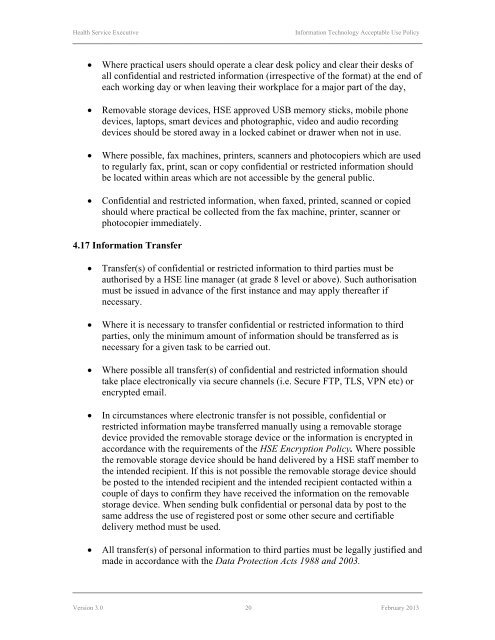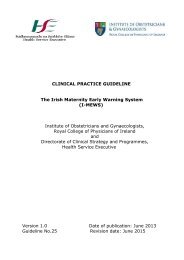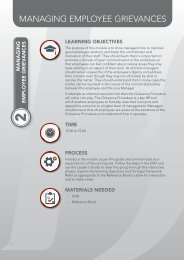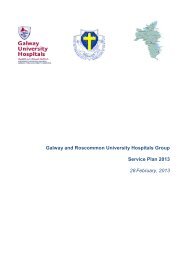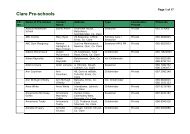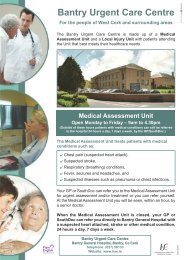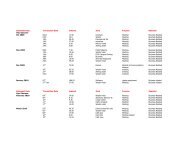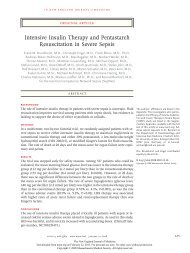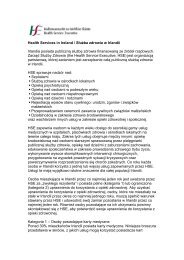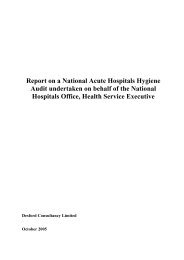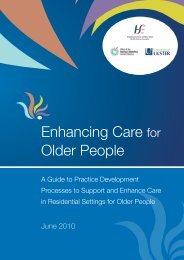I.T. Acceptable Use Policy - Health Service Executive
I.T. Acceptable Use Policy - Health Service Executive
I.T. Acceptable Use Policy - Health Service Executive
You also want an ePaper? Increase the reach of your titles
YUMPU automatically turns print PDFs into web optimized ePapers that Google loves.
<strong>Health</strong> <strong>Service</strong> <strong>Executive</strong><br />
Information Technology <strong>Acceptable</strong> <strong>Use</strong> <strong>Policy</strong><br />
<br />
<br />
<br />
<br />
Where practical users should operate a clear desk policy and clear their desks of<br />
all confidential and restricted information (irrespective of the format) at the end of<br />
each working day or when leaving their workplace for a major part of the day,<br />
Removable storage devices, HSE approved USB memory sticks, mobile phone<br />
devices, laptops, smart devices and photographic, video and audio recording<br />
devices should be stored away in a locked cabinet or drawer when not in use.<br />
Where possible, fax machines, printers, scanners and photocopiers which are used<br />
to regularly fax, print, scan or copy confidential or restricted information should<br />
be located within areas which are not accessible by the general public.<br />
Confidential and restricted information, when faxed, printed, scanned or copied<br />
should where practical be collected from the fax machine, printer, scanner or<br />
photocopier immediately.<br />
4.17 Information Transfer<br />
<br />
<br />
<br />
<br />
<br />
Transfer(s) of confidential or restricted information to third parties must be<br />
authorised by a HSE line manager (at grade 8 level or above). Such authorisation<br />
must be issued in advance of the first instance and may apply thereafter if<br />
necessary.<br />
Where it is necessary to transfer confidential or restricted information to third<br />
parties, only the minimum amount of information should be transferred as is<br />
necessary for a given task to be carried out.<br />
Where possible all transfer(s) of confidential and restricted information should<br />
take place electronically via secure channels (i.e. Secure FTP, TLS, VPN etc) or<br />
encrypted email.<br />
In circumstances where electronic transfer is not possible, confidential or<br />
restricted information maybe transferred manually using a removable storage<br />
device provided the removable storage device or the information is encrypted in<br />
accordance with the requirements of the HSE Encryption <strong>Policy</strong>. Where possible<br />
the removable storage device should be hand delivered by a HSE staff member to<br />
the intended recipient. If this is not possible the removable storage device should<br />
be posted to the intended recipient and the intended recipient contacted within a<br />
couple of days to confirm they have received the information on the removable<br />
storage device. When sending bulk confidential or personal data by post to the<br />
same address the use of registered post or some other secure and certifiable<br />
delivery method must be used.<br />
All transfer(s) of personal information to third parties must be legally justified and<br />
made in accordance with the Data Protection Acts 1988 and 2003.<br />
Version 3.0 20 February 2013


